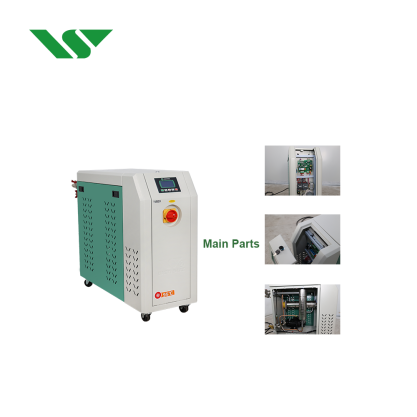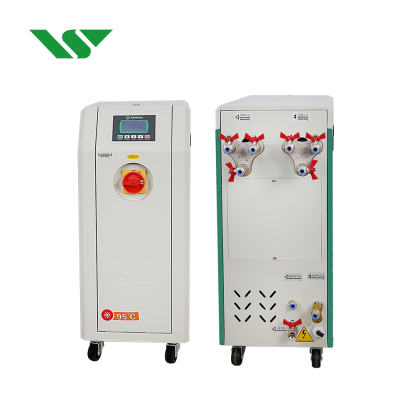Common Issues with Water Temperature Control Machines and How to Resolve Them
2025-03-25 Page view:
Water temperature control machines are essential for ensuring precise temperature regulation during industrial processes, especially in the injection molding industry. These machines help maintain mold temperature stability, improving the quality and efficiency of production. However, like any machinery, they can encounter problems over time. Understanding the common faults and troubleshooting them effectively can ensure your equipment runs smoothly and continues to deliver reliable results. In this article, we will cover the most common issues faced by water temperature control machines and provide practical solutions to resolve them.

1. Heating Problems and Solutions
One of the most frequent issues with water temperature controller is insufficient or faulty heating. This can manifest in the form of slow heating or the inability to heat up at all. The most common reasons for heating problems are:
Faulty Heating Elements: If the heating element is damaged, the machine will struggle to heat properly. Always inspect the heating element for any signs of damage, like burns or corrosion, and replace it as needed.
Poor Water Flow: Insufficient water flow due to a clogged pump or blocked pipes can prevent effective heating. Regular maintenance and checks of the pump and pipes are essential to ensure proper water circulation.
2. Water Pump Malfunctions
The water pump is a key component of the temperature control machine, responsible for circulating water throughout the system. If the pump fails, the machine won’t be able to maintain consistent temperature control, leading to operational problems. Common issues include:
Power Supply Problems: Ensure that the power supply is stable and that the voltage is within the required range. Low voltage or power interruptions can cause the pump to malfunction.
Pump Seizure: Mineral buildup and dirt accumulation can cause the pump to seize. Regular cleaning and maintenance can prevent this issue from occurring, ensuring the pump operates effectively.

3. Inaccurate Temperature Control
Accurate temperature regulation is crucial for mold performance and product quality. If the temperature control system is not functioning properly, it can result in fluctuations in the mold temperature, which can affect the final product. Common causes of temperature control issues include:
Thermostat Failures: Over time, thermostats can wear out or malfunction. If your thermostat isn’t working as it should, it will fail to regulate the temperature effectively. It’s important to replace malfunctioning thermostats as soon as possible.
Sensor Damage: Temperature sensors play an essential role in monitoring the machine's temperature. If a sensor is damaged or miscalibrated, it may provide incorrect readings, disrupting the entire system. Regular inspection and prompt replacement of damaged sensors are key to maintaining temperature accuracy.
4. Leaks in the Water Tank
Water tank leaks are a common issue that can affect the overall functionality of the water temperature control machine. Leaks can be caused by aging tanks, damaged seals, or broken pipes. These issues not only disrupt machine operation but can also create safety hazards. Here’s what to do:
Inspect for Cracks or Damage: Regularly check the water tank for any visible cracks or signs of wear. If you notice any, take immediate steps to repair or replace the affected parts.
Check Seals and Pipes: Ensure that all seals are intact and that the pipes are not cracked. If necessary, replace damaged seals and pipes to prevent further leaks.
5. Addressing System Alarms
Most modern water temperature control machines come with an alarm system that alerts operators to specific issues such as overheating, low water levels, or abnormal pressure. While alarms are helpful, they can be overwhelming if not understood properly. Here's how to address them:
Understand Alarm Codes: When an alarm sounds, check the machine’s display for any error codes. Refer to the user manual to interpret the code and understand the underlying issue.
Follow Troubleshooting Steps: The manual will typically provide detailed troubleshooting steps for each type of alarm. Following these steps carefully can help you resolve the issue quickly and get the machine back to optimal performance.

Water temperature control machines are vital for precise temperature management in industrial processes. By recognizing the common problems they face and following the appropriate troubleshooting methods, you can significantly reduce downtime, improve efficiency, and extend the life of your equipment. Regular maintenance, including cleaning and inspections, is crucial in preventing many of these issues from occurring. With proper care and attention, your water temperature control machine can continue to deliver reliable and accurate results for your production needs.



